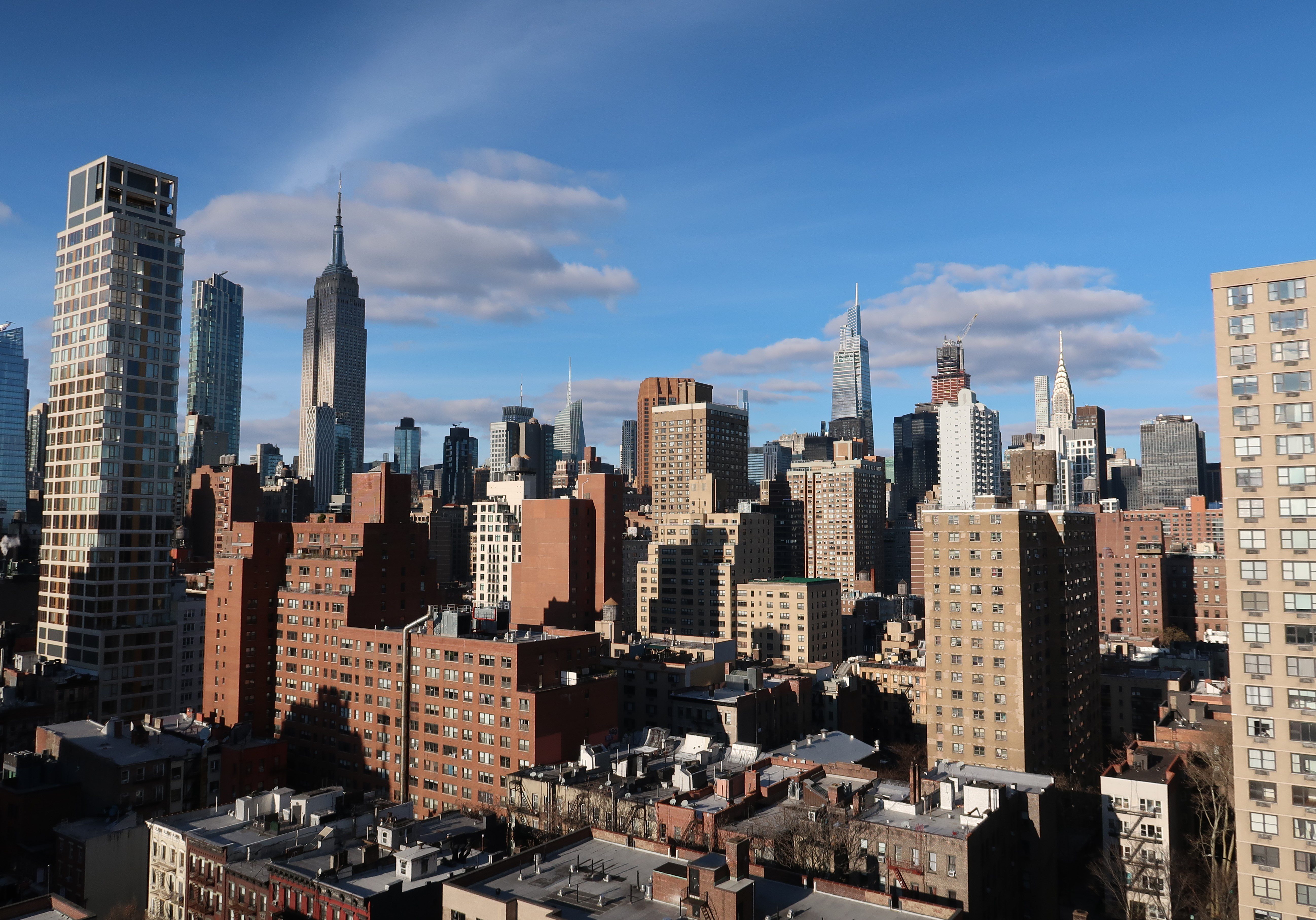Change is coming to New York City in the form of a “Yes.” That’s because two of the three “City of Yes” proposals by Mayor Eric Adams are in motion to help modernize and revamp the city’s outdated zoning regulations. With carbon neutrality and economic opportunity each earning their respective “yes” by a vote from the City Planning Commission, the City of Yes for Housing Opportunity is the last of Adams’ proposals that are currently up for a vote, which is slated for this spring season. So, what does this all mean for the commercial real estate sector?
This month, Milrose Consultants breaks it all down for you. Read on to learn the impacts each proposal will have on building owners and landlords.
City of Yes for Carbon Neutrality—Enacted December 6, 2023
The City of Yes for Carbon Neutrality focuses on the modernization and/or removal of the current zoning regulations—which up until now have been considered obstacles in providing cleaner and greener homes, businesses, and water systems. With decarbonization at its core, the City of Yes for Carbon Neutrality will ease the burden of supporting—and reaching—the city’s climate goals.
Milrose has narrowed down the major impacts you need to know about as they relate to the City of Yes for Carbon Neutrality:
Major impacts
- Five percent floor area deduction for voluntary full electrification for existing buildings.
- Broader permitted obstructions to facilitate full electrification and rooftop heat pumps.
- Floor area exemptions for recladding and over-cladding.
- Automated parking facilities are now permitted citywide.
- Electric vehicles (EV) charging now a permitted use in Zoning Resolution.
City of Yes for Economic Opportunity—Approved by City Planning Commission on March 6, 2024/Enactment Expected by Mid-April
The City of Yes for Economic Opportunity is a large leap forward from the outdated zoning resolutions of 1961. Now, 63 years later, new regulations will help to revive local businesses that—up until now—have been bound by barriers in the use of existing commercial space to adapt to the city’s growth and evolving economy.
This proposal has four major goals:
- Make it easier for businesses to find space and grow.
- Boost growing industries.
- Enable more business-friendly streetscapes.
- Create new opportunities for businesses to open.
Here is a breakdown of the major impacts for the City of Yes for Economic Opportunity:
Major Impacts
- Reduction in Use Groups from 18 to 10. This reduction will help boost growing industries such as urban agriculture, life sciences, and amusements.
- Use Group 6 split into Retail and Services Uses.
- Offices and Laboratories in the same Use Group (7) will allow regulated, licensed labs to expand near hospitals and universities.
- Home offices are allowed to be up to 49 percent of a unit (up from 25 percent).
- Changes to loading requirements.
- New citywide streetscape requirements.
Parking and Loading
New loading regulations will eliminate mandates for loading berths where they are no longer necessary. This will reduce the requirement for unnecessary loading docks and will allow older buildings to adapt over time.
- Parking and loading requirements simplified to Requirement Category and District.
- No parking and fewer loading berths are required for C7 districts near transit.
- Additional loading is not required for changes of use.
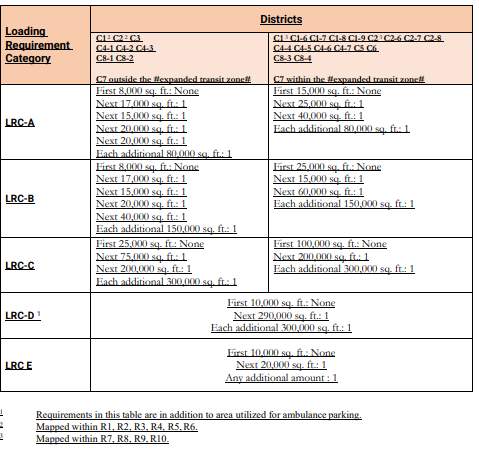
Streetscape Requirements
These regulations deliver active, safe, and walkable streets for businesses and residents by promoting better ground-floor designs with rules that are more consistent and easier to understand. It will boost pedestrian activity and help avoid blank walls and dark stores.
- Expand Special District Streetscape Regulations to apply citywide. These include:
- Ground floor uses
- Transparency requirements
- Maximum lobby dimensions
- Screening for parking
- Applies to developments and ground-floor enlargements
- Different requirements for different “tiers” of frontage based on zoning district.
- Enable micro-distribution in neighborhoods by allowing safe delivery hubs
City of Yes for Housing Opportunity—Estimated Enactment Date: Late 2024
In an effort to create more affordable housing and revitalize NYC neighborhoods, the City of Yes for Housing Opportunity addresses this crisis by modifying outdated or overly restrictive zoning regulations that have limited housing production--such as upzoning residential neighborhoods and making it easier to convert vacant office spaces and non-residential buildings into apartments. By easing the shortage of affordable housing, this new proposal will not only help build vibrant mixed-use communities but will also ease the burdens of New Yorkers who face long commutes and traffic congestion that is considered as a contributing factor to global warming.
Here is a breakdown of the major impacts of the City of Yes for Housing Opportunity and the several areas it will affect:
Major impacts
- Eliminating required parking for new residential development citywide.
- Up to 20 percent Floor Area Ration (FAR) for supported and affordable housing citywide in medium and high-density residential districts (R6-R10).
- Enable zoning districts which traditionally only permit one- and two-family homes, to now allow modest three- to five-story apartment buildings. Additionally, it will permit owners of one-and two-family houses to add an ADU.
- Adjust building envelopes to ensure that typical sites can accommodate floor area (for example, maximum permitted base heights and maximum building heights increased by up to 30 feet), eliminating the “Sliver Law.”
- Allow office-to-residential conversions for buildings built prior to 1990 (presently 1961-1977).
More FAR for Supportive Housing
- Increase FARs for affordable and supportive housing to higher Affordable Independent Residence for Seniors (AIRS) FAR or, in districts without an existing AIRS preference, provide new preferential FAR for affordable and supportive housing up to 20 percent above FAR for market-rate residential.
- Adjust building envelopes to accommodate FARs.
Small and Shared Apartments
- Eliminate Dwelling Unit Factor (DUF) within the inner transit-oriented development area (including Manhattan Core), and reduce DUF outside of this area, to create/allow smaller units of different types of demand and more multi-family housing.
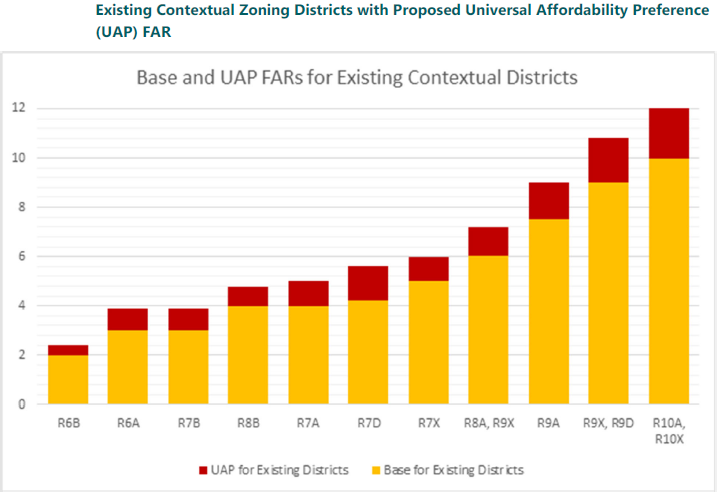
Eliminate Obstacles to Quality Housing Development
- R6-R10 non-contextual districts - remove obstacles to Quality Housing development on sites with existing buildings to increase infill development, and on irregular lots to encourage housing on lots with difficult site conditions.
- Eliminate the “Sliver Law” for developments that utilize Quality Housing regulations.
Conversions
- Change the cutoff date for conversion from 1961 or 1977 to 1990.
- Expand the applicability of conversion regulations citywide beyond CBD.
- Allow conversions to a wider type of housing – for example, rooming units and community facilities with sleeping accommodations.
- Eliminate outdated restrictions on residential conversions in certain areas of Central Manhattan (C6-1G, C6-2G, C6-2M, C6-4M districts).
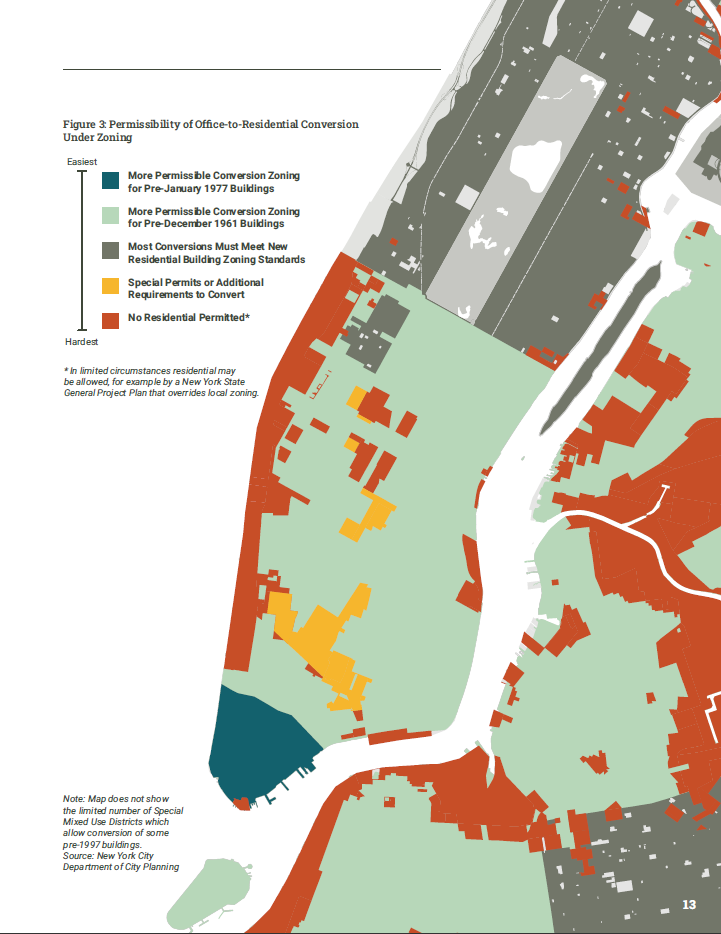
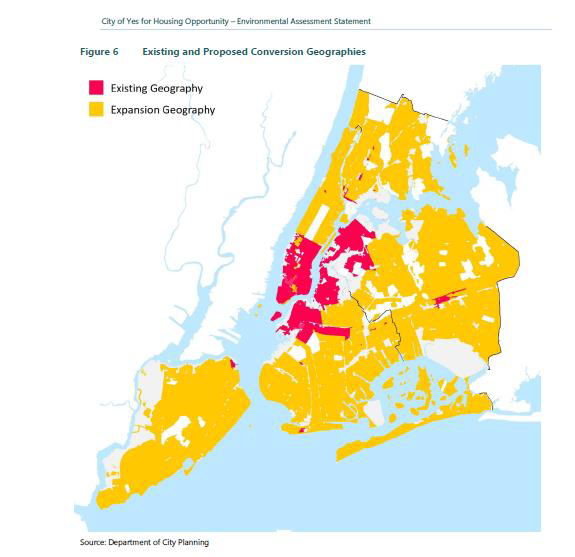
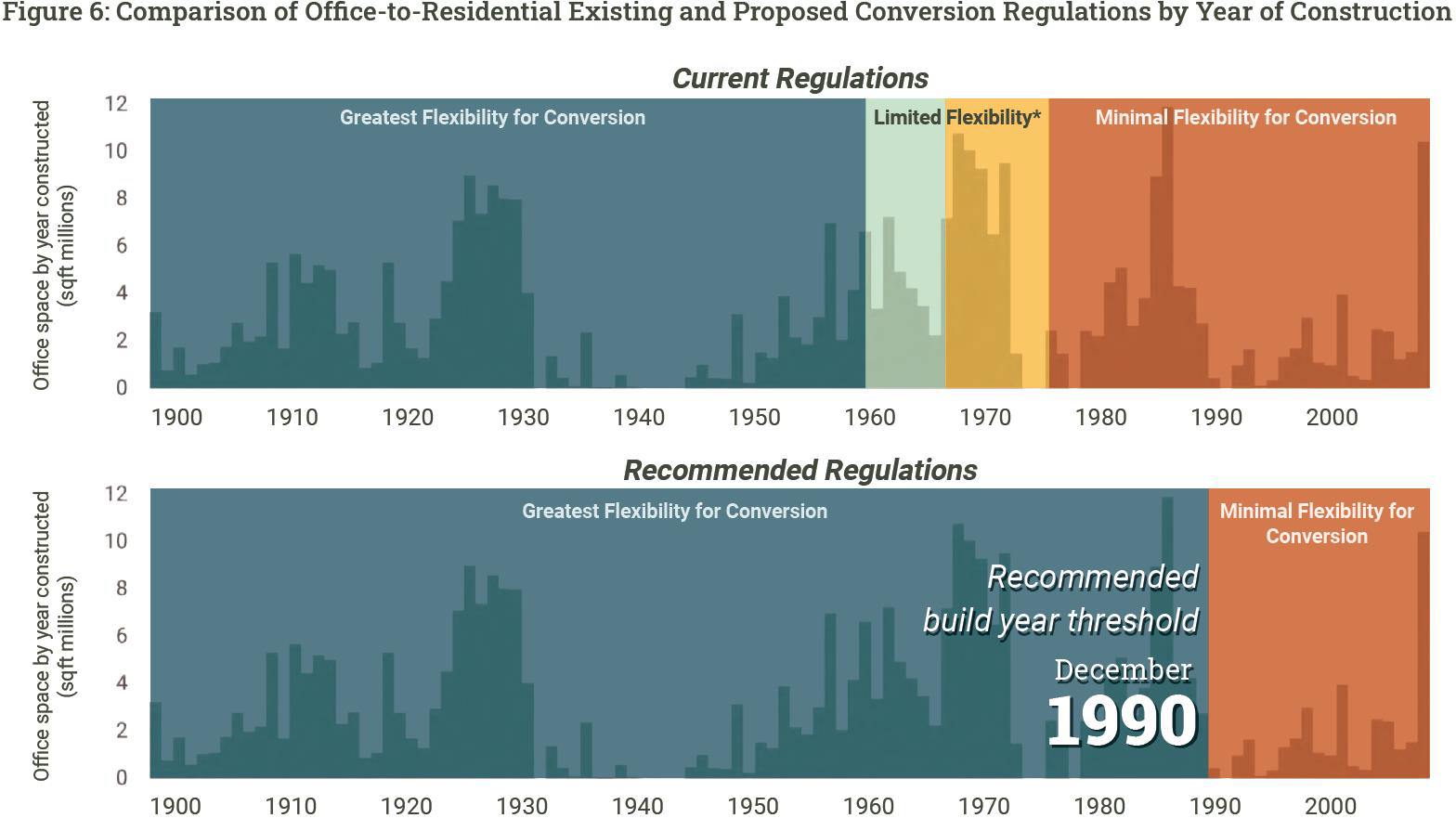
Parking Proposals
- Eliminate parking requirements for new residential development to increase the amount of housing on development sites.
- Discretionary action to remove parking requirements for existing buildings.
- Eliminate or reduce parking for non-residential uses in mixed buildings to encourage more mixed-use buildings and increase the amount of housing on development sites.
Other Zoning Proposals
- More flexible base heights in R6-R10 districts.
- Simplified dormer provisions.
- Increase tower coverage maximums for small lots in R9-R10 districts.
- · Allow more flexibility with non-compliances for existing buildings to increase the likelihood of alterations.
- · Streamline tower on a base regulation.
- · Remove “limited height” zoning districts (For example, UES, Gramercy Park, and Cobble Hill).
- · Loosen restrictions on TDR from landmark sites.
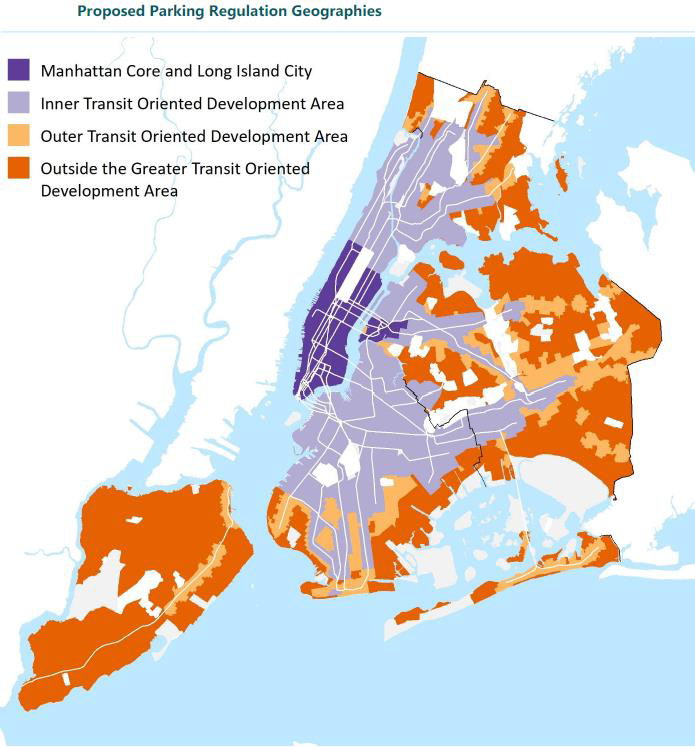
Is your company in the know on New York City’s proposed City of Yes zoning changes? The Milrose Consultants Code & Zoning Department is here to help bring your team up to speed with a one-on-one A1A accredited code presentation. Plus, attendees are eligible to receive one A1A and HSW learning credit for their participation. Contact us today to schedule your presentation!




